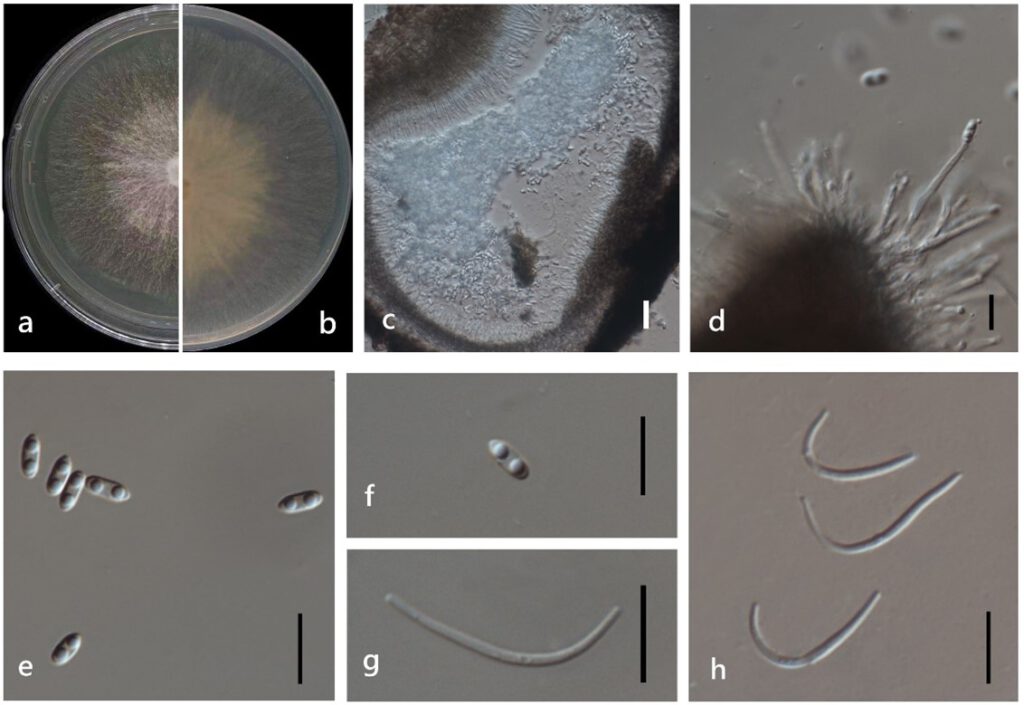Diaporthe megabiguttulata M. Luo, W. Guo, Manawas., M. P. Zhao, K. D. Hyde, & C. P. You, sp. nov. (Figure 9)
MycoBank number: MB; Index Fungorum number: IF; Facesoffungi number: FoF 11353;
Etymology: In reference to its spora with two big guttulates.
Holotype: ZHKUCC 22-0067
Description: Endophytic on Morinda officinalis root. Sexual morph: not observed. Asexual morph: Pycnidia 50–440 × 40–270 μm (`x = 180 ± 120 × 120 ± 70 μm), oblate or hemispherical, single or multiple cavity or rotary cavity. Pycnidial wall consisting of sevearal layers of medium transparent textura globosa-angularis. Conidiogenus cells hyaline, phialidic. Conidiogenous cell hyaline, phialidic. Alpha conidia 5–10 × 2–3 μm (`x = 6 ± 0.5 × 20 ± 0.2 μm), hyaline, ellipsoid or lanceolate, biguttulate, with one end obtuse and the other acute. Beta conidia 20–30 × 1–2 μm (`x = 30 ± 3 × 1 ± 0.3 μm), hyaline, hamate or curved, base truncate.
Culture characteristics: Colonies on PDA reach 85 mm diam. after 4 days. Aerial mycelium, white or pale white, with fruiting body after 20 days. Reverse white, then turns to pale.
Material examined: China, Guangdong Province, Zhaoqing, isolated from a healthy stem of Morinda officinalis. June 2020, W. Guo, dried culture (ZHKU 22-0041), and living culture (ZHKUCC 22-0067 ex-type and ZHKUCC 22-0068 ex-paratype).
Habitat and host: Healthy stem and root of Morinda officinalis.
Known distribution: China (Zhaoqing, Guangdong Province).

Figure 9. Diaporthe megabiguttulata (ZHKUCC 22-0067) (a) upper view of colonies on PDA; (b) Reverse view of colonies on PDA; (c) Horizontal section through a pycnidia; (d) Conidiogenous cells; (e,f) Alpha conidia; (g,h) Beta conidia. Scale bars: (c) =100 µm; (d–h) =10 µm.
